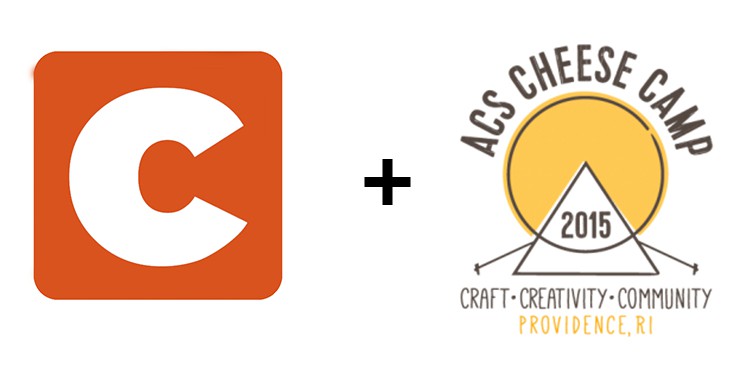
The culture team went all out at this year’s American Cheese Society Conference in Providence, R.I.—attending exciting workshops, tasting incredible cheeses, and meeting amazing makers. Below are fifteen cool, quirky, and awesome factoids we came across during our time wandering the cheesy yet air-conditioned conference center halls (and you can take a look at pictures on our Instagram feed). Check it out!
- Swiss cheesemakers use the term vollmundia to describe their cheese, meaning that the flavor of the cheese involves the whole mouth, sending a signal to every one of your tastebuds.
- In the high mountain pastures of the Alps, Swiss cows are eating 26-28 different species of grass, flowers, and plants—all of which contribute to the flavor of their milk and thus to the flavor of the cheese made from their milk.
- In the Northeast, the average size of a herd of cows is 100; in California, the average size of a herd is 900.
- Casein—the all-important dairy protein in cheesemaking—bonds together in large spherical formations known as micelles. The outside of the micelles have a negative charge, so normally within milk they repel each other; when rennet is added to milk, that negative charge is shorn off and the micelles start to stick to each other, causing the milk to gel and solid curds to form.
- The fruity sweetness of Riesling goes with a LOT of different kinds of cheeses, so if you don’t have a strong blue or stinky wheel, pick up a bottle and try!
- The size of a wheel of traditional English cheddar was originally dictated by how much cheese a farmer could make in a single day.
- Quebecois cheesemaker Laiterie Charlevoix produces Le 1608, a semi-firm washed-rind cheese, from the milk of the Canadienne cow—a breed originally imported to Canada from Brittany and Normandy in the 17th century whose numbers have fallen from 500,000 in 1900 to fewer than 500 today.
- Instead of using a liquid rennet solution to coagulate their cheeses, one Basque maker in Spain uses a rennet paste knows as gazta that supposedly provides a firmer set on the cheese.
- The more empty space in an aging room, the more air circulates and leeches moisture from cheese. How do you preserve moisture if your aging room is stacked full of wheels? Hang a cloth curtain!
- The University of Vermont used the Freedom of Information Act to find out how often the FDA detected instances of E. coli in domestic and imported cheeses from 2004 to 2006. Their findings? Out of 3,360 cheeses sampled, only 3 tested positive for E. coli.
- One out of four people can’t taste bitter compounds.
- If cider was considered a craft beer style, it would be the second best-selling in the United States, behind only IPAs.
- A cow’s gut is far from the number-one contributor of microbes in raw milk—80% come from udders and the external environment.
- It’s more profitable to make cheese from cow’s milk than from goat’s or sheep’s milk.
- Jersey cows were originally bred to make butter.




